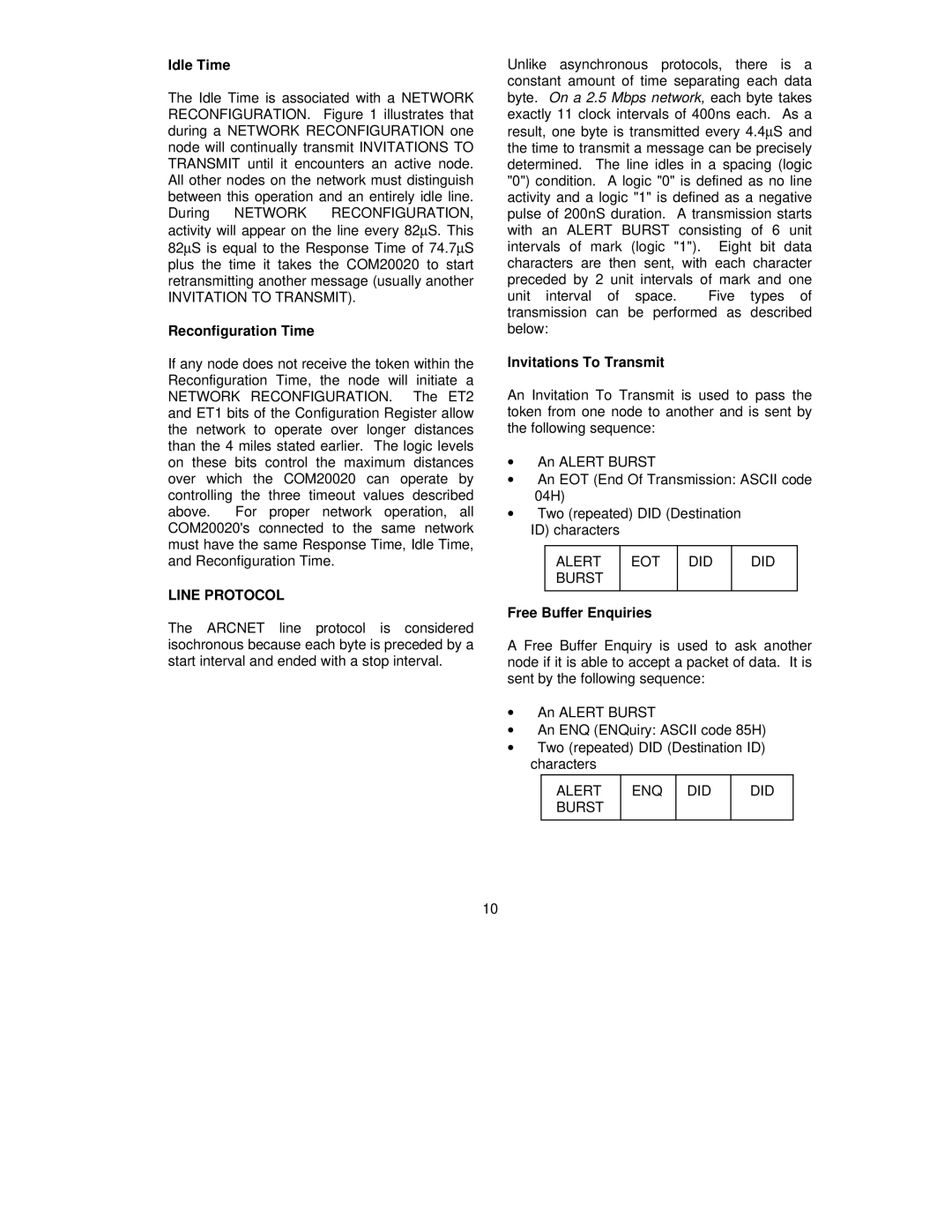Idle Time
The Idle Time is associated with a NETWORK RECONFIGURATION. Figure 1 illustrates that during a NETWORK RECONFIGURATION one node will continually transmit INVITATIONS TO TRANSMIT until it encounters an active node. All other nodes on the network must distinguish between this operation and an entirely idle line. During NETWORK RECONFIGURATION, activity will appear on the line every 82μS. This 82μS is equal to the Response Time of 74.7μS plus the time it takes the COM20020 to start retransmitting another message (usually another
INVITATION TO TRANSMIT).
Reconfiguration Time
If any node does not receive the token within the Reconfiguration Time, the node will initiate a NETWORK RECONFIGURATION. The ET2 and ET1 bits of the Configuration Register allow the network to operate over longer distances than the 4 miles stated earlier. The logic levels on these bits control the maximum distances over which the COM20020 can operate by controlling the three timeout values described above. For proper network operation, all COM20020's connected to the same network must have the same Response Time, Idle Time, and Reconfiguration Time.
LINE PROTOCOL
The ARCNET line protocol is considered isochronous because each byte is preceded by a start interval and ended with a stop interval.
Unlike asynchronous protocols, there is a constant amount of time separating each data byte. On a 2.5 Mbps network, each byte takes exactly 11 clock intervals of 400ns each. As a result, one byte is transmitted every 4.4μS and the time to transmit a message can be precisely determined. The line idles in a spacing (logic "0") condition. A logic "0" is defined as no line activity and a logic "1" is defined as a negative pulse of 200nS duration. A transmission starts with an ALERT BURST consisting of 6 unit intervals of mark (logic "1"). Eight bit data characters are then sent, with each character preceded by 2 unit intervals of mark and one
unit interval of space. Five types of transmission can be performed as described below:
Invitations To Transmit
An Invitation To Transmit is used to pass the token from one node to another and is sent by the following sequence:
∙An ALERT BURST
∙An EOT (End Of Transmission: ASCII code 04H)
∙Two (repeated) DID (Destination
ID) characters
ALERT | EOT | DID | DID |
BURST |
|
|
|
|
|
|
|
Free Buffer Enquiries
A Free Buffer Enquiry is used to ask another node if it is able to accept a packet of data. It is sent by the following sequence:
∙An ALERT BURST
∙An ENQ (ENQuiry: ASCII code 85H)
∙Two (repeated) DID (Destination ID) characters
ALERT BURST
ENQ
DID
DID
10
